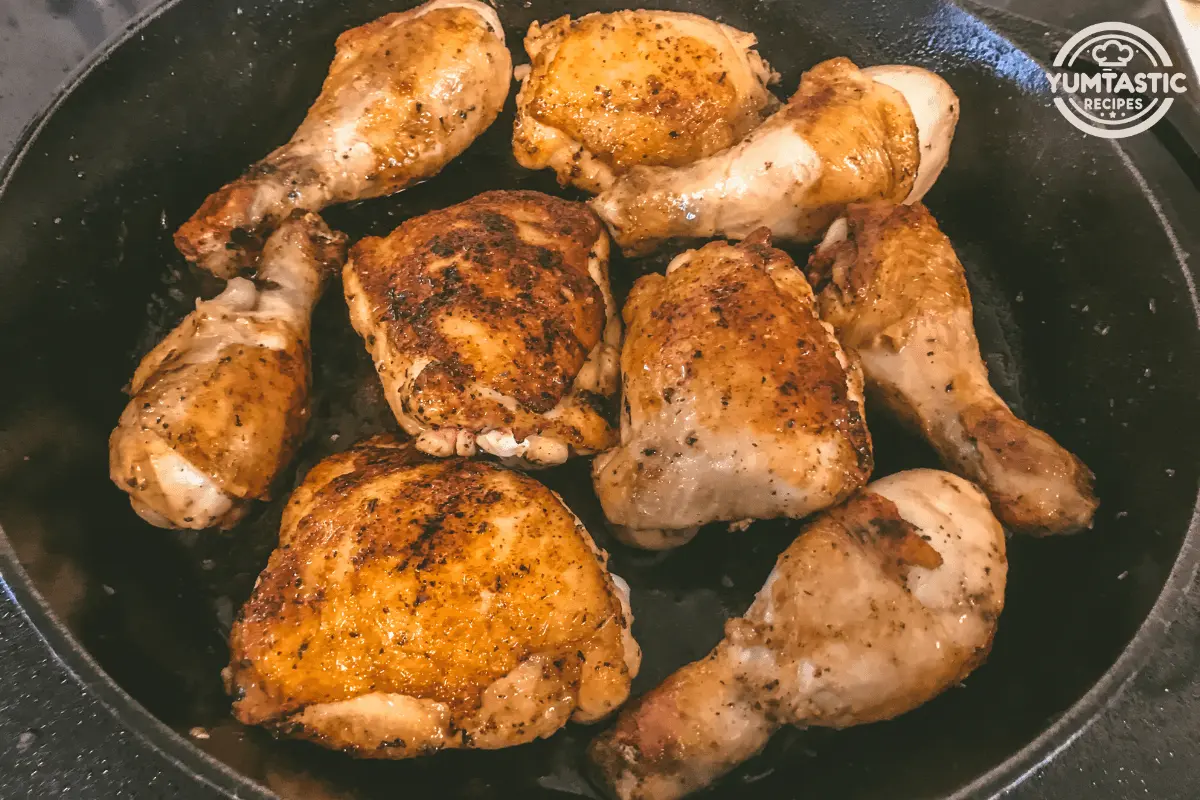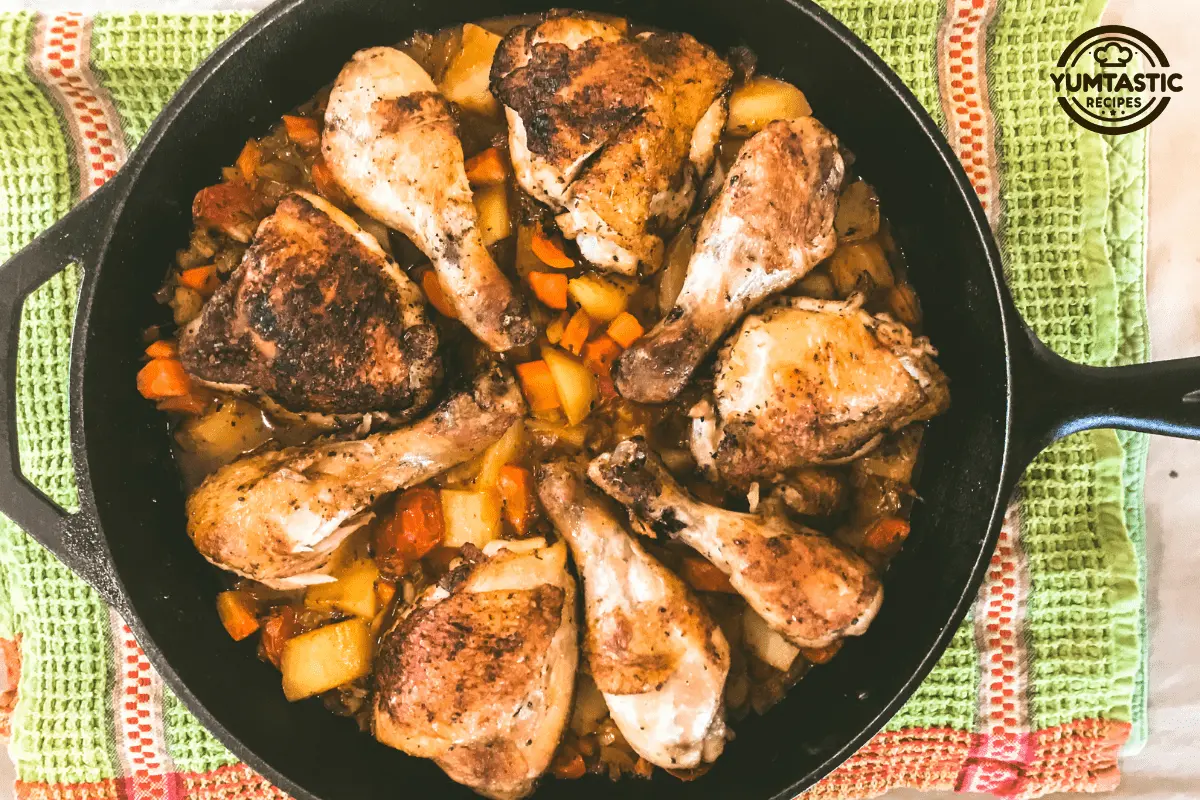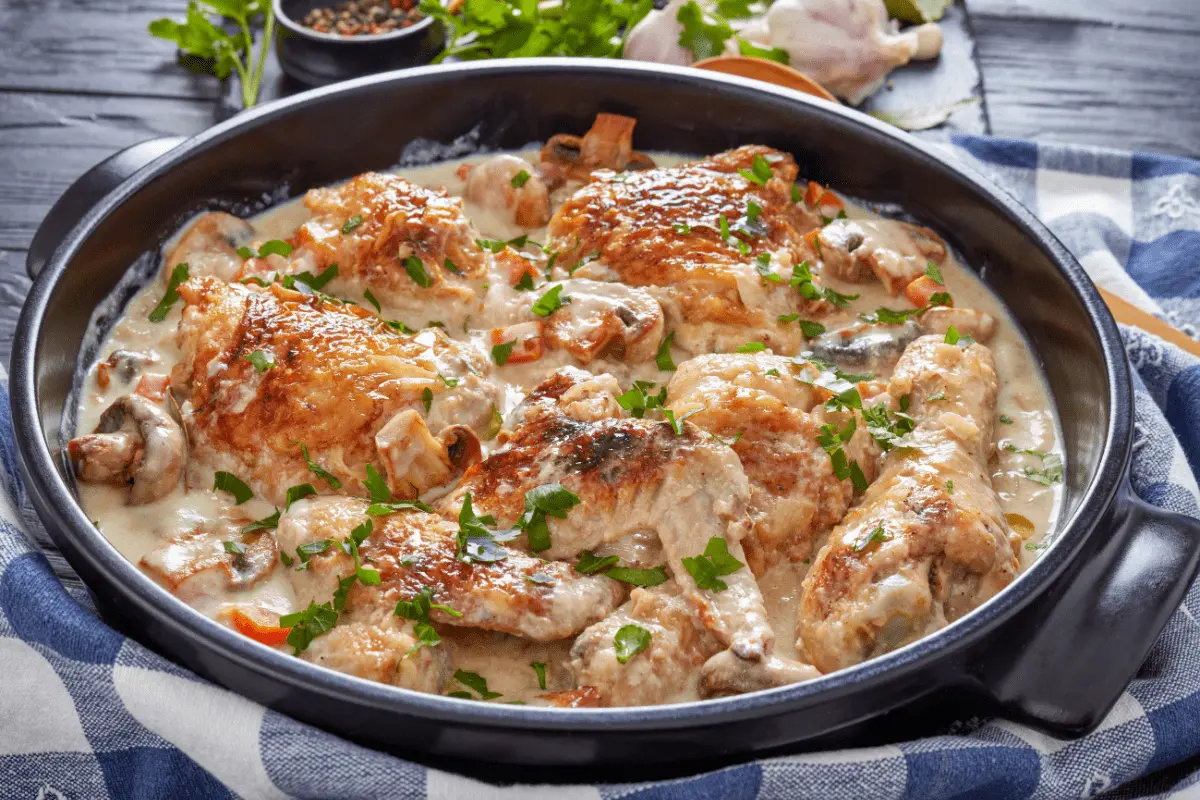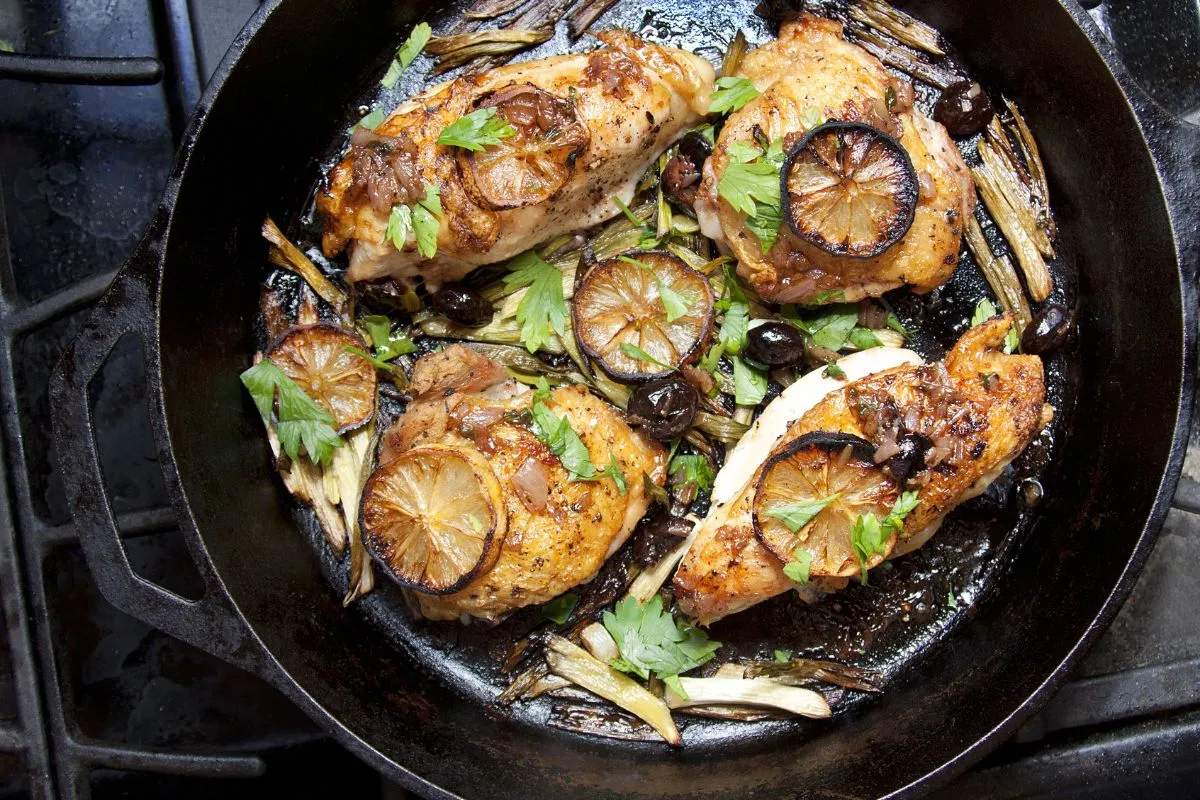In this comprehensive exploration, firstly, we delve into the fascinating world of fricassee, a culinary term rich in history, culture, and a myriad of cooking styles. From its humble beginnings, secondly, this article will guide you through the evolution, techniques, and varieties of fricassee, consequently answering all your burning questions. Whether you’re a seasoned chef or a curious food enthusiast, finally, prepare to embark on a flavorful journey through the art of fricassee.
Introduction to Fricassee
Understanding Fricassee in Culinary Terms
Fricassee, a term that might sound perplexing at first, is a classic cooking technique that has stood the test of time. Originating from French cuisine, the word fricassee is believed to be a blend of ‘frire’ (to fry) and ‘casser’ (to break in pieces). This method involves sautéing meat, traditionally chicken, veal, or rabbit, and then stewing it in a savory sauce, creating a dish that’s both hearty and elegant.
Definition and Origin of Fricassee
The unique cooking process defines the essence of fricassee. In contrast to typical stews, chefs don’t brown the meat in fricassee; they gently sauté it and then simmer it in broth or stock. This technique yields tender, flavorful pieces that soak up the rich, creamy sauce. Fricassee stands out due to this harmonious blend of frying and stewing, creating its distinctive character and texture.
Fricassee in Different Cultures
While fricassee is deeply rooted in French culinary traditions, its versatility has allowed it to traverse borders and adapt to various cultural palates. Each region adds its own twist, be it through the use of local ingredients or unique cooking styles. For instance, in Cajun cuisine, a fricassee might include a roux-based sauce, adding depth and richness to the dish. Similarly, in Jewish cooking, fricassee often features poultry and is cooked with schmaltz (chicken fat), aligning with dietary laws.
In conclusion, fricassee is more than just a cooking method; it’s a culinary journey that offers a glimpse into the history and culture of different regions. As we move forward, we’ll uncover the historical roots of this beloved dish, tracing its evolution from medieval cookbooks to modern-day kitchens.
Historical Background
The Evolution of Fricassee Through History
Tracing the roots of fricassee is like embarking on a culinary time travel. This dish, with its humble beginnings, has evolved significantly over the centuries, adapting to the tastes and traditions of various cultures.
Early References and Recipes
The earliest mention of fricassee dates back to the mid-16th century, but its concept likely existed much earlier. Medieval cookbooks, like the famed ‘Le Viandier‘, hint at similar cooking methods. These ancient recipes provide a fascinating glimpse into the culinary practices of the time, where simplicity met sophistication in the kitchen.
Fricassee in Medieval and Renaissance Cuisine
During the medieval and Renaissance periods, fricassee was more than just a dish; it was a reflection of the societal norms and culinary advancements of the era. Cooks in noble households would prepare fricassee as a refined dish, showcasing their skills in balancing flavors and textures. The use of spices and herbs, along with the technique of gently cooking meat in a creamy sauce, was a testament to the evolving palate of European aristocracy.
As we journey through the annals of culinary history, fricassee emerges not just as a recipe, but as a symbol of the gastronomic evolution. From the rustic kitchens of medieval Europe to the grand banquets of the Renaissance, fricassee has been a constant, adapting and evolving, yet always retaining its core essence.
Cooking Techniques
The Art of Preparing Fricassee
Mastering the art of fricassee is a delightful challenge for any cook. It’s a dance of flavors and techniques, blending the simplicity of sautéing with the complexity of slow cooking. Let’s dive into the nuances that make fricassee a beloved dish worldwide.
Basic Ingredients and Preparation
The cornerstone of a classic fricassee lies in its ingredients. Typically, it starts with meat – chicken, rabbit, or veal are popular choices. The meat is cut into pieces, gently sautéed in butter or oil to a light golden hue, and then simmered in a broth. This method ensures the meat remains tender and infused with flavors.
The sauce, an integral part of fricassee, usually begins with a roux, a mixture of fat and flour. Then, you add stock or broth, along with herbs like thyme, bay leaf, and parsley, to create a rich, velvety sauce that beautifully coats the meat. The final touch often includes a dash of cream or egg yolks, adding a luxurious texture to the dish.
Variations in Cooking Techniques
While the basic technique of fricassee remains consistent, regional variations add a unique twist to this classic dish. For instance, in Cajun cuisine, a darker roux is used, giving the dish a deeper flavor and color. In contrast, Mediterranean versions might include tomatoes and olives, offering a tangy, vibrant profile.
The beauty of fricassee lies in its adaptability. Whether it’s the choice of meat, the type of thickening agent, or the additional ingredients, each variation adds a new dimension to this classic dish. It’s a testament to fricassee’s enduring appeal and its ability to transcend culinary boundaries.
Types of Fricassee
Exploring Different Varieties of Fricassee
Fricassee, in its essence, is a canvas for culinary creativity. Across the globe, this dish takes on various forms, each reflecting the unique flavors and traditions of its region. Let’s explore some of these delightful variations.
Chicken Fricassee and Its Popularity
Chicken fricassee is perhaps the most renowned variant, beloved for its comforting and homey feel. This version typically involves simmering the chicken in a creamy sauce, often enriched with mushrooms, onions, and a bouquet of herbs. It’s a dish that speaks of nostalgia, often passed down through generations, each adding their own personal touch.
Beef, Rabbit, and Other Meats in Fricassee
While chicken might be the star, other meats like beef and rabbit also make exquisite fricassee. Beef fricassee, often made with tender cuts, brings a robust flavor to the dish. Rabbit fricassee, a delicacy in many cultures, offers a leaner yet equally succulent alternative. These variations not only diversify the fricassee family but also cater to different palates and preferences.
Vegetarian and Seafood Fricassee
Fricassee isn’t limited to meat lovers. Vegetarian fricassee, brimming with seasonal vegetables and cooked in a rich, herb-infused sauce, is a testament to the dish’s versatility. Seafood fricassee, featuring fish or shellfish, offers a lighter yet flavorful take on this classic, marrying the essence of the sea with the traditional creamy sauce.
In conclusion, fricassee is a celebration of diversity in the culinary world. From the classic chicken fricassee to the more adventurous seafood and vegetarian options, there’s a version of fricassee for everyone.
Fricassee in World Cuisine
Across the Globe
Fricassee, a dish with humble beginnings, has journeyed far and wide, weaving its way into the hearts and kitchens of various cultures. Each region has embraced fricassee, infusing it with local flavors and ingredients, thus creating a tapestry of culinary delights.
French and Italian Influences
In France, the birthplace of fricassee, the dish symbolizes classic, rustic cooking. French fricassee typically features a white wine-based sauce, enriched with cream and a mélange of herbs, thereby embodying the elegance and finesse of French cuisine.
Meanwhile, crossing over to Italy, fricassee takes on a slightly different character. Italian fricassea often includes a touch of lemon, consequently adding a bright, zesty flavor that contrasts beautifully with the creamy sauce. This citrusy twist reflects the vibrant and lively essence of Italian cooking.
Fricassee in American and Jewish Cuisine
In the United States, particularly in Southern cooking, people have warmly embraced fricassee. They often associate it with comfort food, a hearty dish that brings families together. The American version might include ingredients like bell peppers and a roux-based sauce, a nod to the country’s diverse culinary influences.
Jewish fricassee, particularly in Ashkenazi cuisine, is a unique rendition, often featuring chicken offal and meatballs. Cooked with schmaltz and served with traditional sides like kugel or matzo balls, this version is a beautiful representation of Jewish culinary traditions.
Fricassee’s global journey is a testament to its versatility and universal appeal. Indeed, from the elegant French tables to the cozy American homes, fricassee has found a place in every culinary culture it has touched.
Modern Interpretations
Contemporary Takes on Fricassee
As we sail into the modern era, fricassee continues to evolve, embracing new trends and flavors while retaining its classic charm. Today’s chefs and home cooks are reinterpreting this timeless dish, infusing it with contemporary flair and creativity. See how traditional recipes inspire modern desserts in our Fricassee Cake Recipe.
Fusion and Innovative Recipes
In the realm of fusion cuisine, fricassee stands out as an ideal dish for experimentation. Chefs skillfully blend traditional fricassee techniques with ingredients from diverse cuisines, thereby creating a symphony of flavors. For instance, envision a fricassee infused with coconut milk and lemongrass, offering a nod to Southeast Asian flavors, or alternatively, consider a version with saffron and preserved lemons, echoing Moroccan influences.
Fricassee in Modern Restaurants
In modern restaurants, fricassee is often presented with a gourmet twist. Chefs are elevating the dish with luxurious ingredients like truffles or intriguing non-native mushrooms, presenting it in a way that appeals to both the palate and the eyes. This new-age fricassee, while sophisticated in presentation, still pays homage to the dish’s rustic roots.
The transformation of fricassee in contemporary cuisine is a beautiful illustration of how traditional dishes can adapt and thrive in the modern culinary landscape. It’s a dish that respects its history while boldly stepping into the future.
Frequently Asked Questions About Fricassee
Fricassee’s varied history and forms raise questions; this section clarifies and deepens understanding of the dish.
What are some serving suggestions for fricassee?
When it comes to serving suggestions for fricassee, there are several traditional options to consider. One popular choice is to serve fricassee with a plain starch, such as white rice or buttered noodles. Another option is to pair it with steamed or mashed potatoes, which can add a touch of creaminess to the dish. Lastly, serving fricassee with bread is also a customary choice. These serving suggestions provide a variety of options to complement the flavors of fricassee and create a satisfying meal.
What distinguishes fricassee from other stews?
Fricassee is unique in its cooking method. Unlike typical stews where meat is browned before simmering, in fricassee, the meat is sautéed lightly without browning and then simmered in a broth or sauce. This technique results in a delicate flavor and tender texture.
Can fricassee be made with fish or seafood?
Absolutely! While traditionally made with chicken, veal, or rabbit, fricassee is highly adaptable. Seafood fricassee, using fish, shrimp, or scallops, is a lighter alternative that still captures the essence of the dish.
Is fricassee suitable for a vegetarian diet?
Yes, vegetarian fricassee is a delightful option. It can be prepared with a variety of vegetables like carrots, peas, and mushrooms, cooked in a rich, herb-infused sauce.
What are the key ingredients in a classic fricassee sauce?
The sauce typically includes a roux (a mixture of fat and flour), broth or stock, and cream or egg yolks. Herbs like thyme, bay leaf, and parsley are also common, adding depth and flavor to the sauce.
How long does it take to prepare fricassee?
The cooking time can vary depending on the recipe and meat used. Generally, it takes about 1 to 2 hours to prepare, ensuring the meat is tender and the flavors are well-developed.
Can fricassee be made ahead of time?
Yes, fricassee often tastes even better the next day as the flavors have more time to meld. Just be sure to store it properly in the refrigerator and reheat gently.
Is fricassee considered a healthy dish?
Fricassee can be part of a balanced diet. It’s rich in protein, and by adjusting ingredients like cream and using leaner meats, it can be made healthier without sacrificing flavor.
Summarizing the World of Fricassee
In concluding our deep dive into fricassee, we see it’s far more than just a recipe. This culinary tradition, spanning centuries and continents, has evolved while staying true to its roots. Fricassee, in its many forms, skillfully adapts to different cultural tastes and ingredients, yet keeps its unique cooking method.
Classic French chicken fricassee and modern fusion versions showcase the dish’s incredible versatility. This adaptability reflects the creativity of cooks and chefs who have reimagined fricassee, ensuring its relevance and popularity in today’s culinary world.
The history of fricassee and its evolution across cuisines highlight its lasting appeal. Whether as a comforting family meal or a gourmet dish in fine dining, fricassee consistently delights and unites people.
Fricassee isn’t just about cooking meat a certain way; it’s about the stories, traditions, and innovations simmering together, creating something timeless and borderless. This dish, embodying culinary art’s spirit, invites us all to explore, experiment, and enjoy.
As we conclude our exploration of fricassee, we take away a rich blend of flavors, techniques, and histories. It reminds us of food’s power to connect us with our past, present, and future.



